How to pinch ficus (Benjamin, rubbery) correctly?
In a flower shop, shoppers are often advised to "pinch the ficus on a regular basis." But how to pinch a ficus correctly and why is it needed? We suggest you figure it out.
Why pinch a ficus?
Ficuses are a genus of plants in the Mulberry family. They came to us from the tropics and subtropics. In their homeland, they are considered parasitic plants. Ficuses begin their lives as epiphytes, settling on other trees. Gradually, the "weed" entwines everything with its roots. Ultimately, the forophyte on which it grows dies.
Under indoor conditions, ficuses are not so active - they grow slowly and do not reach a great height. Only experienced florists manage to grow a spreading fluffy tree as tall as a human being. Partly pinching helps with this. They are needed for the following purposes:
- to stimulate branching;
- to stop growth in height;
- to maintain a given shape;
- for health and rejuvenation.
Which ficuses do not need to be pinched?
A big problem with all ficuses is the loss of decorative appearance due to the falling of the lower leaves. Even if the branching is genetically inherent in the plant, the branches and trunk gradually “go bald”. In addition, tree shoots often grow in random order, interfere with each other, hang down, create a shadow. Without shaping procedures, even a beautiful plant runs the risk of turning into something painful and unattractive in a few years.
Pinching and pruning is recommended for all types of ficus.
How to pinch correctly?
Ficus really does not like it when his location is changed. He can drop all the foliage at once. However, pinching is not very stressful when done correctly:
- Do not combine transplanting and pinching. Between one and the second procedure, you need to take a break of 2 weeks.
- Use a disinfected sharp instrument - scissors, pruning shears, nippers. On young and soft shoots, the growth point can be pinched off with your fingers.
- Perform the operation within the recommended time frame.
- Provide the plant with good care for quick recovery.
Age and timing
It is better not to miss a moment and start pinching the tree exactly when you need it to split in two. Otherwise, it will outgrow, and the top will have to be cut off. After pruning stiff shoots, hemp remains, and the buds on them are in no hurry to bloom.
With the help of plucking, predominantly young plants 1–3 years old are formed.
The best time to pinch ficus is early spring. Around the end of February - March, plants wake up from hibernation and begin to form young shoots. By pinching the growth points at this time, you are more likely to get strong side shoots. But you can carry out the operation later - until the onset of winter.
In the winter months, it is undesirable to engage in the formation of a ficus: it is in a dormant state. Pinching in this case will not work or the shoots will grow painful and weak.
Step-by-step instruction
Before pinching the ficus, pay attention to the direction of growth of the uppermost bud. The lateral shoot will develop in this direction.
There are several subtleties to pinching a green plant. In order not to be mistaken and to do everything right, use the instructions.
How to pinch a ficus step by step:
- Examine the plant to make sure it is healthy and growing actively.
- Pick up the longest shoot.
- Find buds on it and see in which direction they grow.
- If the direction of the uppermost bud suits you (a lateral shoot is formed from it), remove the part of the plant that is higher.
It is more convenient to pinch with a tool. But if the sprout to be removed is soft and thin, you can pinch it with your fingers.
Don't leave a long stump. The shoot is pinched just above the kidney.
Ficus wounds are not treated with anything. The plant secretes milk, which resembles dandelion sap, which promotes rapid healing of damaged tissues. To stop liquid oozing, wipe the pinched area with a damp cloth.
Ficus juice is poisonous and pungent. It is important not to allow it to come into contact with skin, mucous membranes, clothing or furniture. Putting the cut sprout on the table, you risk getting a stain that will not be washed off.
Further care
For a quick recovery, the plant needs good lighting and maintaining the temperature from +25 to +27 degrees. It also needs to be watered and sprayed regularly. Humidity should be high, but not excessive.
A month after the formation of the ficus, you need to feed it with liquid mineral fertilizer for decorative deciduous plants or other nitrogen.
At first, the internodes on the side shoots will be short, and the leaves will be small. You should not worry about this. Gradually the internodes will stretch out. True, the lower leaves will remain small. This is the norm. Subsequent leaves will grow to a standard size.
Features of the formation of different ficuses
Pinching is an auxiliary, gentle method of plant formation. In the case of ficuses, it is impossible to do with pinches alone.
To give the ficus a beautiful decorative look, it is regularly "cut". In the spring, dry branches are cut, as well as branches that have grown in the wrong place.
In fact, ficus can be given any shape:
- bush;
- stem;
- bonsai;
- tiered;
- fence;
- spiral;
- free (tree).
A tree with a weave in the lower part looks very nice. To do this, several young plants are planted in one pot, side branches are cut, intertwined and fixed. They soon grow together.
To form a ficus, it is not necessary to use schemes. You can give free rein to imagination. The main thing is to remember three rules:
- The trunk must be strong enough.
- The side branches should not tilt the plant.
- Over-branching is also bad.
First of all, the ficus must be firm and well lit. Carried away by pinching, you risk getting a plant with a thickened crown, suffering from a lack of light and air. This can result in leaf fall or fungal disease.
Ficus Benjamin
The most popular member of the genus. In nature, it grows up to 20 m in height, forms numerous aerial roots, which create additional support and form a multi-stemmed banyan tree. The leaves of the plant are leathery, shiny, on short petioles. Variegated forms of Benjamin's ficus are often found. They need bright lighting for their bright colors to appear.
In the first 4 years, the plant develops rapidly. It is characterized by independent branching. However, the branches grow in a chaotic manner, quickly outgrow and tilt.
Ficus Benjamin is often "cut". The pinching is carried out to maintain the given shape of the bush.
Ficus rubber
This species is characterized by a dark green color of the leaves. They are large, dense, as if covered with a film of wax. Ficus rubber contains 15% rubber in its trunk. In India, "living" suspension bridges are grown from it.
In natural habitat, the plant reaches a height of 40 m, at home it can easily grow to the ceiling (no more than 10 m). It rapidly stretches upward and is in no hurry to give lateral shoots.
Pinch rubber ficus so that it bush, and not grow in one stem. The first pinching is done when the optimal height is reached (70–80 cm). After removing the top of the head, it ceases to stretch upward and grows to the sides.
Forming a ficus is very interesting.It forms shoots where needed. With the help of pinching and trimming, the plant can be given the most intricate shape. However, these are not the only methods. Branching can be achieved by fixing the apex at the base of the trunk, using kerbovka (weakening the root nutrition of the desired bud), cytokinins (special hormones). Don't be afraid to work with ficus. Its magnificent view is completely in your hands!
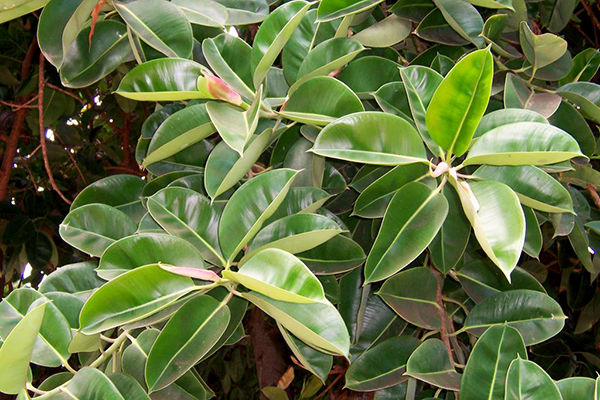
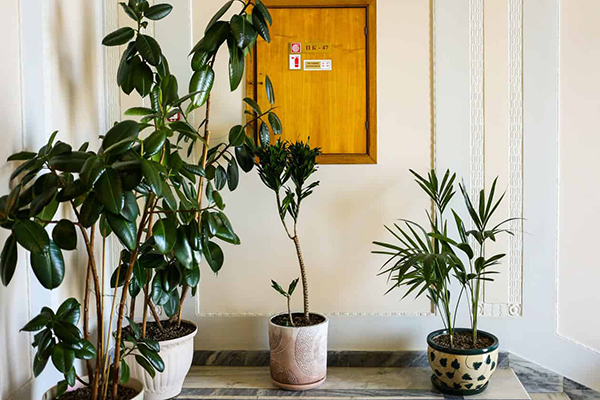
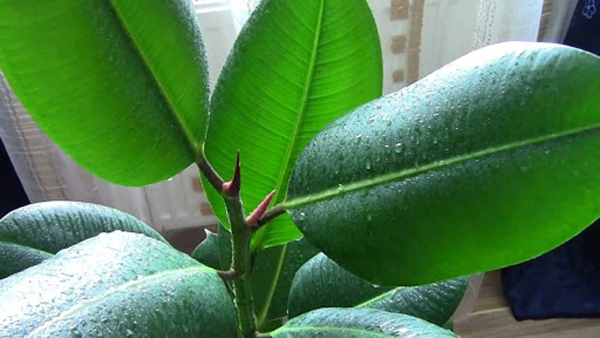
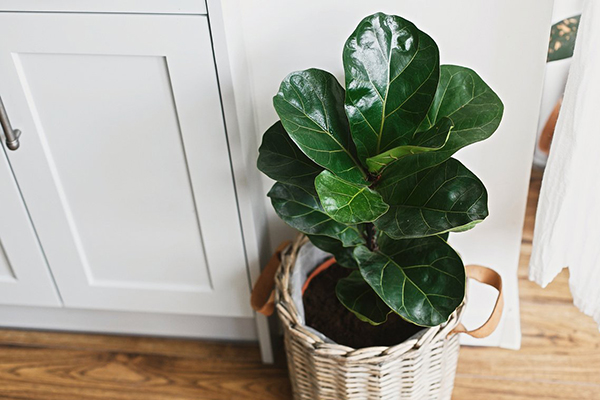
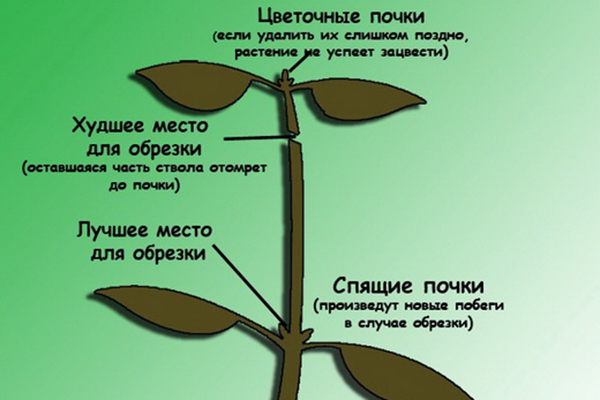
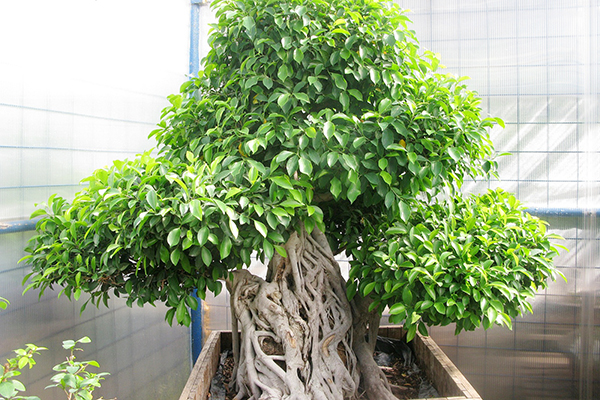
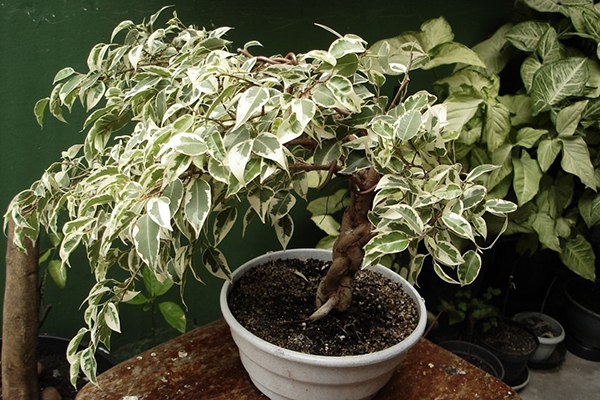


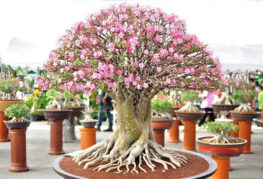


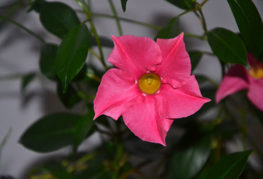
and will be published shortly.